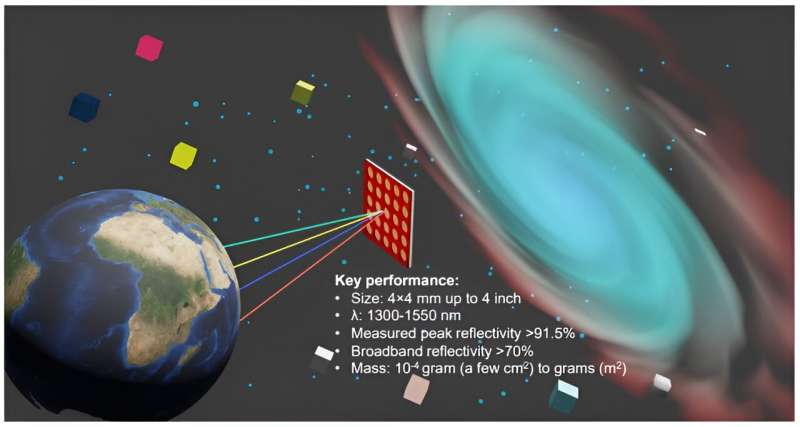And what better material to build the sails from then something that just makes me want to say it over and over again: photonics crystals. It sounds right out of a "Star Trek" episode, but a new paper examines their feasibility.
The concept of light sails is really quite simple. Instead of a fabric sail attached to a ship that harnesses the force of the wind, light sails harness the force of light to propel spacecraft through the cosmos. They rely upon the pressure of photons emitted by a powerful light source like a laser to generate low levels of thrust.
The idea is that photons of light carry momentum and exert a force when they reflect off a surface. The deployment of large, super thin sails made of reflective material like Mylar—of the same variety used commonly in amateur astronomy to observe the sun—the spacecraft can be pushed along, slowly accelerating but eventually to astonishing speeds.
While light sails may not get a spaceship off the ground and into orbit, once deployed in space, the long slow acceleration is a very efficient way of traveling through space. This is not just science fiction, the Starshot Breakthrough project has become a leader in the field to develop a spacecraft to send humans to Proxima Centauri 4.3 light years away) in a human lifetime.
A paper recently published on the arXiv preprint server by a team led by Jin Chang explores the possibility of a new material for light sails known as nano manufactured photonics crystals. These crystals are optical nanostructures (between microscopic and molecular scales) where the refractive index changes periodically. These occur in nature in the animal kingdom for example in the reflective nature of cat and dog eyes.
The team shows how a silicon nitride photonics crystal with a thin silicon membrane can achieve the high levels of reflectivity in the 1300 nm to 1500 nm wavelengths required for light sails. The potential in the sails is significant with the manufacturing techniques able to scale up to several meters which may well set the scene for finally, if not slowly, sending humans across the galaxy.
More information: Jin Chang et al, Broadband, High-Reflectivity Dielectric Mirrors at Wafer Scale: Combining Photonic Crystal and Metasurface Architectures for Advanced Lightsails, arXiv (2023). DOI: 10.48550/arxiv.2312.04471
Journal information:arXiv
Provided by Universe Today



